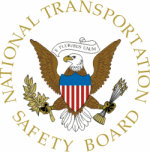Finds That The Shop Which Performed Annual Inspection
Improperly Reassembled Fuel System
This is one of those reports which every pilot hates to read,
because it appears there was almost no way for the PIC of this
aircraft to know there was a problem with his airplane until the
prop stopped spinning. The NTSB found that the fuel system on the
recently-annualed airplane was not properly reassembled.

File Photo
NTSB Identification: WPR10FA163
14 CFR Part 91: General Aviation
Accident occurred Friday, March 19, 2010 in Morton, WA
Probable Cause Approval Date: 04/12/2011
Aircraft: CIRRUS DESIGN CORP SR22, registration: N224GS
Injuries: 1 Fatal,1 Serious.
The airplane was in cruise flight when the engine lost power.
The pilot attempted to reach the nearest airport, but the airplane
collided with trees about 2.5 miles short of the runway.
Non-volatile memory from the cockpit instruments revealed that the
engine power decreased to 1,200 and 1,750 rpms, while the fuel flow
reached 30 gallons per hour (the maximum range of the fuel flow
sensor). Examination of the airframe and engine revealed no
evidence of preimpact mechanical anomalies except for the fitting
cap on the throttle and metering assembly inlet, which was not
installed. The cap was found resting on the cylinder baffle, and
there was light blue staining on the crankcase indicating fuel
leakage. During a postaccident engine run, the engine operated
normally with a substitute cap installed finger tight.
An annual inspection was completed about 11 flight hours prior
to the accident, during which three engine cylinders were replaced.
Following the cylinder replacement, the fuel system pressures were
checked with instrumentation that was plumbed into the system at
the throttle and metering assembly. Following the pressure tests,
the line where the instrumentation was connected should have been
secured with the fitting cap that was found not installed. The
manufacturer’s maintenance procedure requires that after the
pressure tests are completed the cap be torqued and that a leak
check be performed.

Metallurgical examination of the cap showed that if it had been
properly torqued it would have remained secure. Therefore, it is
likely that the cap was installed finger tight and was not properly
torqued when it was reinstalled. During the accident flight, the
cap loosened and came off, resulting in a loss of engine power due
to fuel starvation. There was no logbook entry for the most recent
annual inspection, nor had the final items on the annual inspection
checklist been completed. The Director of Maintenance for the
facility had signed off the work order and returned the airplane to
service. The assigned mechanic with inspection authorization
indicated that he had not completed the annual inspection on the
airplane and that the last maintenance he performed was that noted
on the work order and annual inspection checklist. If the final
checks had been completed, it is likely that the improperly secured
cap would have been found because the fuel leakage would have been
evident.
The National Transportation Safety Board determines the probable
cause(s) of this ACC as follows:
The failure of maintenance personnel to properly secure a
fitting cap on the throttle and metering assembly inlet after
conducting a fuel system pressure check, which resulted in a loss
of engine power due to fuel starvation. Contributing to the
accident was the decision by the Director of Maintenance to return
the airplane to service without verifying with the assigned
inspector that all annual inspection items had been completed.
 ANN's Daily Aero-Term (05.29.25): Terminal Radar Service Area
ANN's Daily Aero-Term (05.29.25): Terminal Radar Service Area ANN's Daily Aero-Term (05.30.25): Very High Frequency (VHF)
ANN's Daily Aero-Term (05.30.25): Very High Frequency (VHF) Aero-News: Quote of the Day (05.30.25)
Aero-News: Quote of the Day (05.30.25) Airborne 05.23.25: Global 8000, Qatar B747 Accepted, Aviation Merit Badge
Airborne 05.23.25: Global 8000, Qatar B747 Accepted, Aviation Merit Badge ANN's Daily Aero-Linx (05.30.25)
ANN's Daily Aero-Linx (05.30.25)




